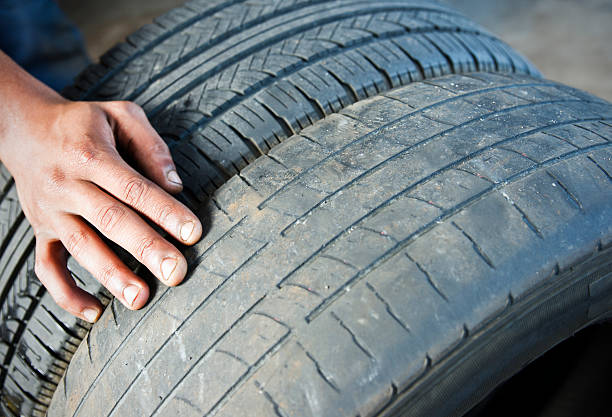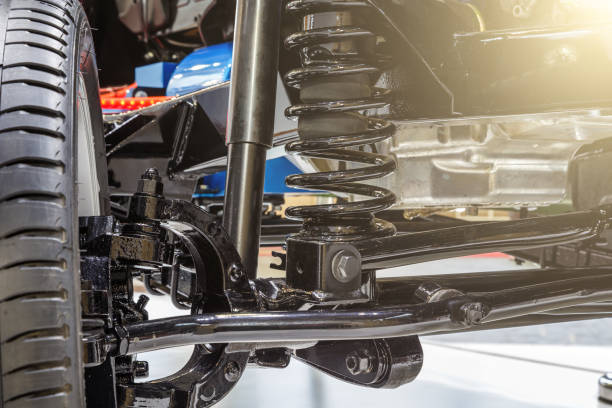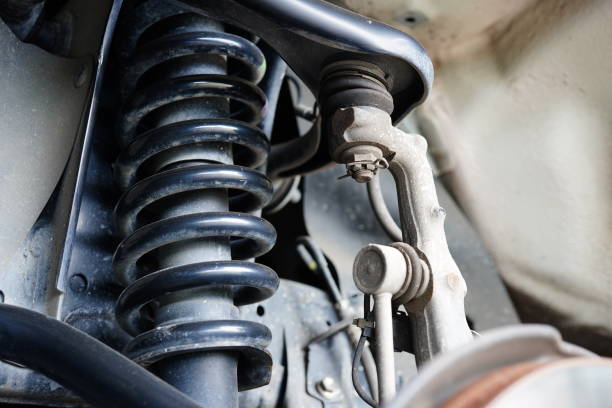When you’re driving through a speed bump, pothole, or rough road, you’ll be grateful that the shocks and struts of your car are in good working order. Although these two components are often thought of as the same thing, they are individual parts that provide an important function to keep your car stable and safe.
How do you know when shocks and struts have failed? In the article, we will share with you 7 signs of worn shocks and struts on your car to help you have the precautionary methods timely.
Shocks and Struts are always easily overlooked when we maintain the car. Knowing the symptoms of bad shocks and struts will help you save money and improve the performance of your car. If your car shows one of the signs below, Let’s change shocks and struts immediately:
>> See more: Shocks and Struts: The Differences Explained!

7 Signs of worn shocks and struts on your car.
1. Strange Noise
When your car drives on the road, especially over bumps, your car makes a knocking sound, it is the sign of bad shocks. The reasons can be distorted cylinder, rusty springs, occurring rubbing between details that cause the unusual noise. The sound often emanates from the rear or front wheels of your car.
2. The car shakes when driving
The role of shock absorbers and struts is to prevent vibrations when the car rides on uneven roads. If the driver feels the car is bouncing up and down stronger than usual, the reason is shock absorbers and struts. When these parts fail, are damaged, or loose, the tires can’t be exposed to the road while the vehicle is moving, making your car shake.
3. Uneven tire worn

Regularly check the tires, if you find that the tires are worn unevenly, the ability to contact the road surface is not guaranteed, in this case, it is also necessary to pay attention to the shock absorbers.
4. Leaking liquid in shock absorbers
If the fluid is detected at the end of the shocks for car, it can be a bad strut symptom. The reason for leaking liquid is the shock absorber on the car was exposed and the hydraulic oil leaked out. Hydraulic liquid helps shocks and struts to absorb the force of the road surface.
5. Steering wheel deviates
In the case of a car carrying a full load, the vehicle shows signs of tilting to one side along with the phenomenon of unbalanced steering. That’s a sign that the car may have broken one of the shock absorbers or struts are bent. Especially, When you drive on uneven roads, bad shocks and struts can cause more difficult when you navigate turns or corners.
6. Reduced braking ability
Car brakes do not work properly; most of the problems are due to lack of oil, open gaskets, but sometimes due to worn struts and shocks. Brakes apply force to the wheels to stop them; the suspension directs that force onto the rest of the vehicle. Bad performance shocks have a significantly reduced ability to absorb the force of a stopped vehicle.
7. The front of the car bounces sharply when braking sharply
If this happens, you need to have your shock absorber and struts checked right away. It could be that your shock absorber is worn. If you let the front end of the car bounce when it brakes hard or wobbles when changing direction, this can reduce your control of the steering wheel, causing many dangers to the driver, especially in the case of slippery roads.
>> Related post: When And How To Do Shocks And Struts Replacement
FAQ
How long does Shock Absorber last?

According to experts, normally after 80,000 – 140,000 km of operation, the car’s suspension system will begin to wear. It is difficult to determine the lifespan of shocks on a car because it depends on many factors such as road conditions, driving habits, load capacity.
How to avoid bad shocks and struts?
Like other parts in the car, struts and shocks should be checked periodically for scheduled maintenance of your vehicle to ensure they are in good working order and show no signs of severe wear. In most cases, when your car reaches 50,000 miles or so, you should replace them.
To prevent your car from breaking down, avoid driving when critical parts – such as tires, brakes, and shock absorbers or struts – need repair.
What should we do when shocks and struts fail?
You should go to a trusted mechanic to inspect the condition of the two parts. In some cases, you can completely replace shocks and struts by yourself. But, make sure you read all the detailed instructions before doing it.
Final Thoughts.
When you notice that your shock absorber and struts have 7 warning signs that we mentioned above. Bring your car to be checked and maintained immediately to know whether you need to replace shocks and struts. Driving with bad shocks and struts can cause uncomfortable feelings, and it can make your suspension and your tires damaged. Read more in the next article to know the ways to replace these two parts.



